Matt Manley (painter, teacher, digital artist, and illustrator of Rumi wall calendars published by Brush Dance) – interviewed by Natalie Dekel.
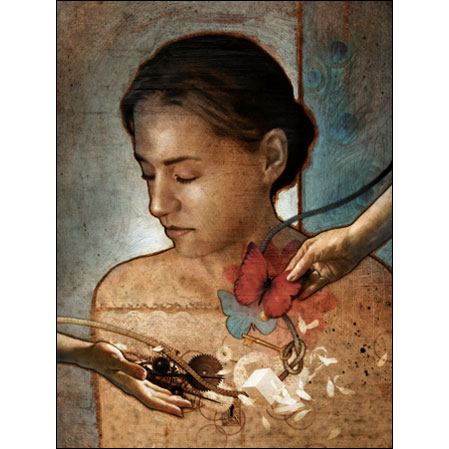
Figure 1: Reciprocity. Oil on canvas, mixed media, digital. 11.25′ x 15′ at 300ppi, 2007.
Natalie Dekel: Your work seems a mix of symbols and memories – a puzzle leading the viewer to discover a story. Is this correct?
Matt Manley: I think this could be an accurate view of my work, as long as the story being discovered belongs to the viewer and not to me. Hopefully the puzzle would have numerous equally valid solutions and the puzzle pieces would correctly fit together in more ways than one.
Linear plot is something I generally dislike in literature and films and I have little interest in exploring it in my own work. There are stories behind many of my visual ideas, and numerous concepts that are explored in my work have a story-like beginning, middle, and end, but they’re not necessarily connected in that order… Sometimes they all exist simultaneously within a single space. Much of the imagery utilized in any given piece is meant to form connected relationships with other parts of the composition. Though I have very specific reasons behind the choice and use of particular imagery, I don’t feel it is necessary – or even important – for the viewers to understand my exact intentions. By inviting them to make subjective and non-linear connections themselves, the viewers may find their own stories reflected in my work. The very nature of symbolism is mercurial and the viewers’ response should mirror this multiplicity.
On some illustration projects I may work with more specific sources and the imagery in the work may need to be similarly more specific. Despite this I am continually surprised by people’s varied responses to and interpretations of concepts present in illustration work that would seem to be less open to interpretation. Symbols applied to specific ideas still struggle against being pinned down and pigeon-holed.
You seem to use graphical elements as well as painterly illustrations. Can it be said that your work is more logical (graphical) than emotional (painted)?
If anything, I’m trying to achieve a balance between these opposing positions. Sometimes the work may tip more to one side than the other, but my goal is always balance and harmony. There is of course a certain amount of both emotional and intellectual content to any given piece, but I consciously avoid visual elements that may provoke specific and predictable emotional responses in potential viewers. I’m not trying to be deliberately obscure or emotionless, but I also don’t want to manipulate a viewer into a specific response.
There are good analogies to this in the world of film: Robert Bresson, Andrei Tarkovsky, Luis Buñuel, Ingmar Bergman, Kenji Mizoguchi, and many other film-makers are not known for strong emotional content or obvious emotional performances from the actors in their films. Buñuel would film the hands or feet of his actors during emotional scenes in order to prevent easy and direct emotional responses on the part of his audience. Almost every single frame of Robert Bresson’s entire body of work could easily be viewed as strictly formal, rigid, and emotionless. I almost never respond to obvious emotional acting in films, and almost always have a very strong emotional response to what appears to be formal and emotionless films. In these cases the artists are asking the audience to bring their own emotional experiences to bear on the works of art, rather than resorting to manipulative devices to create predictable responses.
I’m attempting to follow this same path. In the end the work may seem to be more logical than emotional, but I find this preferable to being overtly emotional and manipulative in my work.
And yet, the human face and body, which may contain direct emotions, constitute a lot of your images.
Only rarely do my ideas not revolve around the human form… Through most of my college years my severely limited use of the figure fell into the realm of simple portraiture. I wasn’t comfortable with the figure and had difficulties drawing and painting it. Late in my junior year I developed a deep interest in psychology and mythology (retained to this day), and suddenly almost all my ideas began revolving around the human form. It was an almost instant transformation of my visual interests. My use of the figure stems directly from my interest in these subjects.
I am decidedly more interested in exploring inner realities as opposed to the external world of surface, form, and ordinary three-dimensional space. In the visual arts these internal realms can easily be explored through abstract visual means, and often they may be more relevant as such. My work could follow this path if I wished to take it in that direction. It could also easily shift to the opposite direction of external representational imagery, but the idea of pursuing strict portraiture (or landscapes, or cityscapes) is just as unappealing to me as the idea of pure conceptual visual abstraction. Non-figurative visually abstracted explorations of these internal realities in my work would be akin to writing a novel without any characters, or making a feature length film without any people in it. (Though in all truth I would find both of these approaches to be very interesting in theory, but probably difficult to sustain a connection to.)
The figurative elements help ground the conceptual ideas, striking a healthy balance between internal abstract concepts and external representational forms. They are the outer signs that lead to the inner realities and more ambiguous conceptual explorations. Despite – or perhaps because of – my longstanding interest in more rendered human forms, I am starting to move away from more detailed representations of people in my work. I’m finding that simple shapes, silhouettes, and fractured figurative elements can often be just as effective, and at the moment my interests seem to be shifting to this slightly more abstract path.
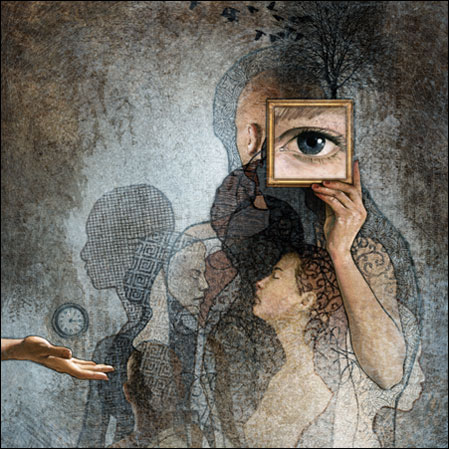
Figure 4: Matt Manley – solve et coagula. Oil on canvas, mixed media, digital. 15′ x 15′ at 300ppi, 2009.
I find some of your work to have strong references to Renaissance Art (Velasquez, da Vinci). Would you agree?
Yes, I can certainly see some of the parallels. I have a distinct memory of being moved by the quality of light in Vermeer’s paintings and this is something that has influenced my own work in the flat textural spaces around the figures. In general I don’t spend much time looking at other works of visual art. I’m not entirely sure why… Any influence this period of art may have on my work would be almost entirely unconscious. I’m far more influenced by books (literature, poetry, psychology, mythology, alchemy), film, and music than most forms of visual art.
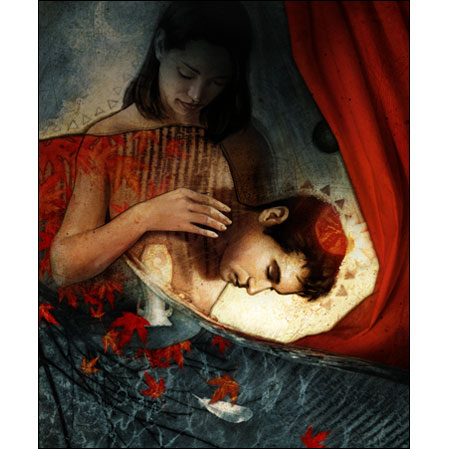
Figure 5: Matt Manley – Chymical Wedding. Oil on canvas, mixed media, digital. 12′ x 14.5′ at 300ppi, 2005.
I feel that your personal background (family, mother) has a strong influence on you as an artist. Is this correct?
All artists are reflected in their work to greater or lesser degrees, so my work obviously contains various aspects of myself in it. That said, I very rarely create deliberate self-portraits, even when I use myself as a reference model. I see my work more as a means of exploring various abstract ideas and concepts (which may or may not have anything to do with me personally) and less as a potential form of autobiography or direct self-expression.
In some ways my work is a direct outgrowth of my personal experiences. An intense personal interest in psychology and mythology coincided with a period of personal growth which in turn coincided with a complete transformation of my work.
In all honesty, when I consider the experiences that have influenced my work over the preceding 20 years or so, most of the sources that immediately spring to mind are books. Last year I read James Joyce’s Ulysses all the way through for the first time after two previous attempts and it completely altered the way I viewed my own work; it opened my eyes to many new possibilities previously hidden or unknown.
I still recall my first reading of T. S. Eliot’s The Waste Land and the changes that single poem ushered in. That was 17 years ago and it still reverberates and echoes in my work. There are many similar instances I could cite connected to many books that deeply effected me: Thomas Mann’s The Magic Mountain, Joseph Campbell’s Creative Mythology and The Inner Reaches of Outer Space, Hermann Hesse’s Demian and Steppenwolf, C. G. Jung’s The Undiscovered Self, the poetry of William Blake, Rainer Maria Rilke, Rabindranath Tagore and many others… Discovering the films of Andrei Tarkovsky many years ago had a similarly profound impact on my work.
These are the great influences that stand out most prominently as I look back upon my artistic path. The above examples are far from the only influences on my work, and are often not noticeably differentiated from closely connected personal experiences, but they do loom large. Explaining how and to what extent these experiences (and some books can be intense enough to be considered experiences) have affected my path of exploration is almost impossible. It is something too vast to be quantified.
Certainly my background and my family have had an influence on me and my work. This would be true of most people, for good or ill, whether they are artistic or not, though the extent of influence is perhaps more pronounced or noticeable in artists. In my case my family has been a positive influence upon my work if only for their general support of my artistic path. The women in my extended family (along with my wife) are intelligent and independent (not that the men are the opposite or different by any means) and I think this has directly affected my use of the female figure in my work. Illustration clients are very happy to receive work in which women are utilized within concepts portraying intelligence or the mind or other so-called masculine environments. Apparently this is somewhat rare in illustration.
Despite such a continual emphasis on figures in my work, I lead a rather hermetic life and draw most of my artistic and creative strength from periods of solitude (socializing markedly drains my energies). During the warmer parts of the year I require a time of seclusion in nature, and during the colder parts of the year I require a period of seclusion in my own home. The dominance of the figure in my work may lead one to assume just the opposite.
You mentioned that you sometimes spend weeks in nature. How important is nature to your work?
Nature is one of the most important aspects of my art and my life. On the level of the everyday and ordinary it is a refuge from the modern world and I require a week or two of immersion in it every year, isolated from modern amenities like electricity and running water, and distractions such as email, phones, traffic noise, and even other people. In large part my interest in it stems from my interest in the symbolism inherent in mythology and psychology. The natural environment is an outward extension of the inner realities explored by religions and mythologies. Whether one sees this as projection, anthropomorphism, or unenlightened primitivism, it is hard not to see the impact of nature on the human psyche, and that in turn is the basis of its impact on my work.
It seems that nature has lost much of its role as symbol in today’s society. We know that certain animals are not manifestations of the human soul, we know that the moon is just a satellite of the earth, we know that the stars are just other stars – much like our own sun – many light years away from us. The sun is just the sun, nothing more, nothing less. To paraphrase T. S. Eliot, we have perhaps lost knowledge in all this information. Nature is still a source of awe and wonder despite my modern scientific knowledge of the many things connected with it. I do have a healthy interest in the natural sciences but that doesn’t have to cancel out the artistic or poetic observations of the world around me. They are not mutually exclusive methods of observation and each may enhance the other.
Do you believe in meditation as part of artistic creative process? Do you have any specific habits or special ways to prepare for creating your art?
In my experience the creative process (artistic or not) is meditation, or at least one form of it. I don’t necessarily believe that meditation is something that only can be achieved when one is sitting quietly with eyes closed, in a particular pose. These approaches may help, but they aren’t the only paths available. More traditional forms of meditation can be more effective and/or powerful if one’s eyes are open during meditation. Apart from the supposed need for one to be immobile and inactive, this meditative mental state is precisely what is achieved when one is completely absorbed in the creative process: the mind is emptied of all thought and one is completely present in the moment. I may turn to more deliberate meditation practices when difficulties present themselves, but I find the creative process itself to be more than sufficient most of the time.
There is nothing particular or peculiar that I do to prepare myself for work. I’m more creative when I’m reading so I tend to be in the middle of a book at any given point in time. Music is important to my process, if only as a background element. Noise is anathema to my creative process and I rarely immerse myself in noisy environments for very long. I am often thinking about works-in-progress or potential ideas when not actively working, so I try to immerse myself in conducive surroundings as much as possible because thinking about an idea can be more important than the physical realization of that same idea.
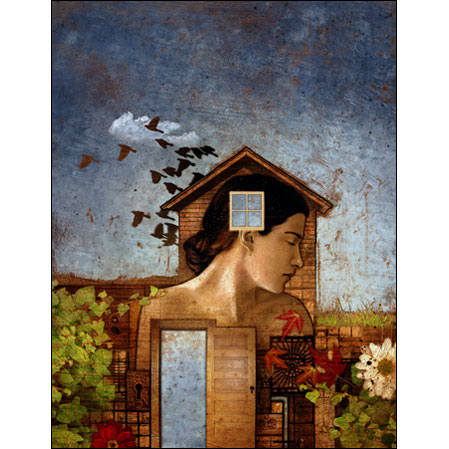
Figure 7: Matt Manley – Meditation on Building. Oil on canvas, mixed media, digital. 11.75′ x 15.25′ at 300ppi, 2005.
And the measure of space in your illustrations – is that space aiming to be part of that meditation on the creative subject?
This may be a very mundane answer to this question, but the space is often there as a visual counterpoint to the detail in the rest of the piece. It’s a place for the eye to rest. Of course, this is a non-poetic way of saying that the space provides a meditation on the subject. It is also there because I love working with organic painterly textures, and like having spaces for them to exist in my work. I’m only conscious of the need for a resting place for the eye and my desire to work with relatively flat painterly texture. Going back to my interests in inner realities, the presence of these empty spaces also points to my lack of artistic interest in dimensional external space and external realities in general.
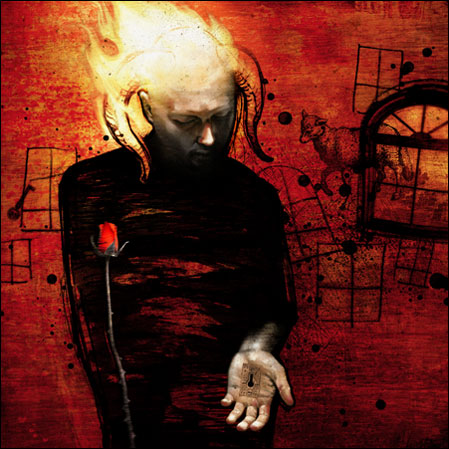
Figure 8: Matt Manley – Black Sheep. Oil on canvas, mixed media, digital. 15′ x 15′ at 300ppi, 2009.
What interests you in working on spiritual subjects (if I may conclude that your art is spiritual?)
I normally don’t think of my work as spiritual. Others may see it that way and that doesn’t bother me in the least. Since my conceptual interests revolve around inner realities, the external world is of little artistic interest to me beyond its contrast to or reflection of any relevant internal concerns. The internal is by extension also a spiritual realm, and my interest in psychology, mythology, alchemy, and religion are clearly spiritual interests. Ideas about memory, stress, time, psychology, etc. don’t fit comfortably under a spiritual umbrella, though they are all clearly part of our internal worlds. I tend to see my subject matter as more poetic in nature, an exploration of ideas that aren’t quite tangible, that are ambiguous, maybe esoteric. In the end I suppose one word is as accurate as another, they are all trying to define something that would be better understood if left undefined.
I tend to be drawn to pluralistic ideas which often involve themes of opposites (life and death, internal and external, male and female, heart and mind, etc.) and the interaction and/or conflicts between them, the conjunction or sublimation of one into the other. I’m not interested in showing the stark contrasts between these extremes, preferring instead to focus on how those basic contrasts illuminate the more intangible, ambiguous, and even paradoxical rhythms of life that exist between the poles. All of this emanates from the realm of the internal/spiritual, and for me this constitutes a more accurate depiction of life than the more differentiated external world.
» How Do I Close My Eyes To See?…
3 May 2010
Paintings: © Matt Manley. Text: © Natalie Dekel and Matt Manley.
Interview held via email correspondence, March-May 2010. Matt is based in the USA. Natalie is based in The UK.
Matt’s Website.

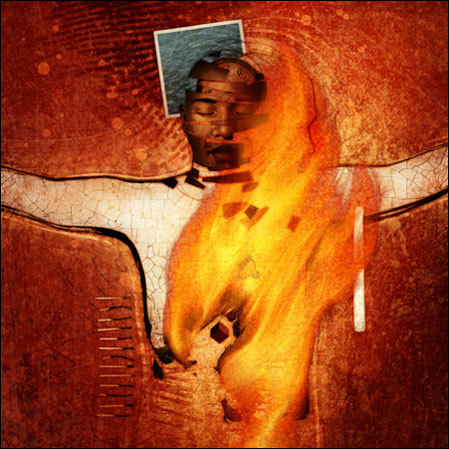
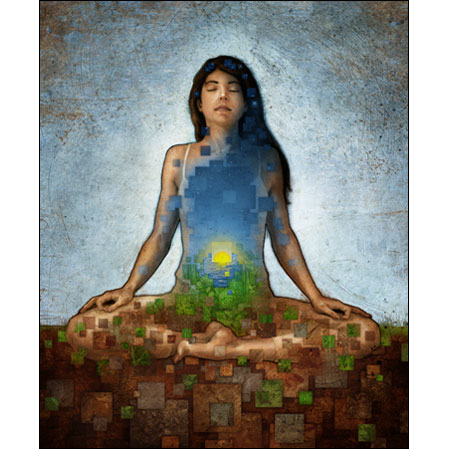
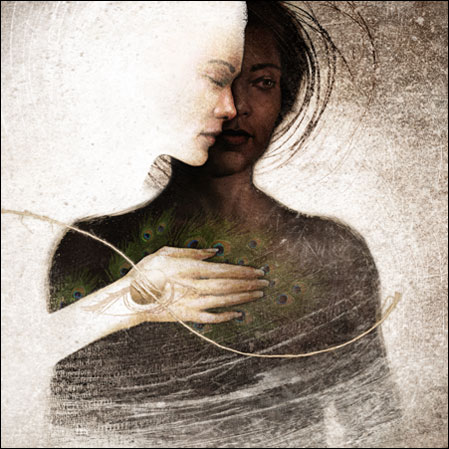
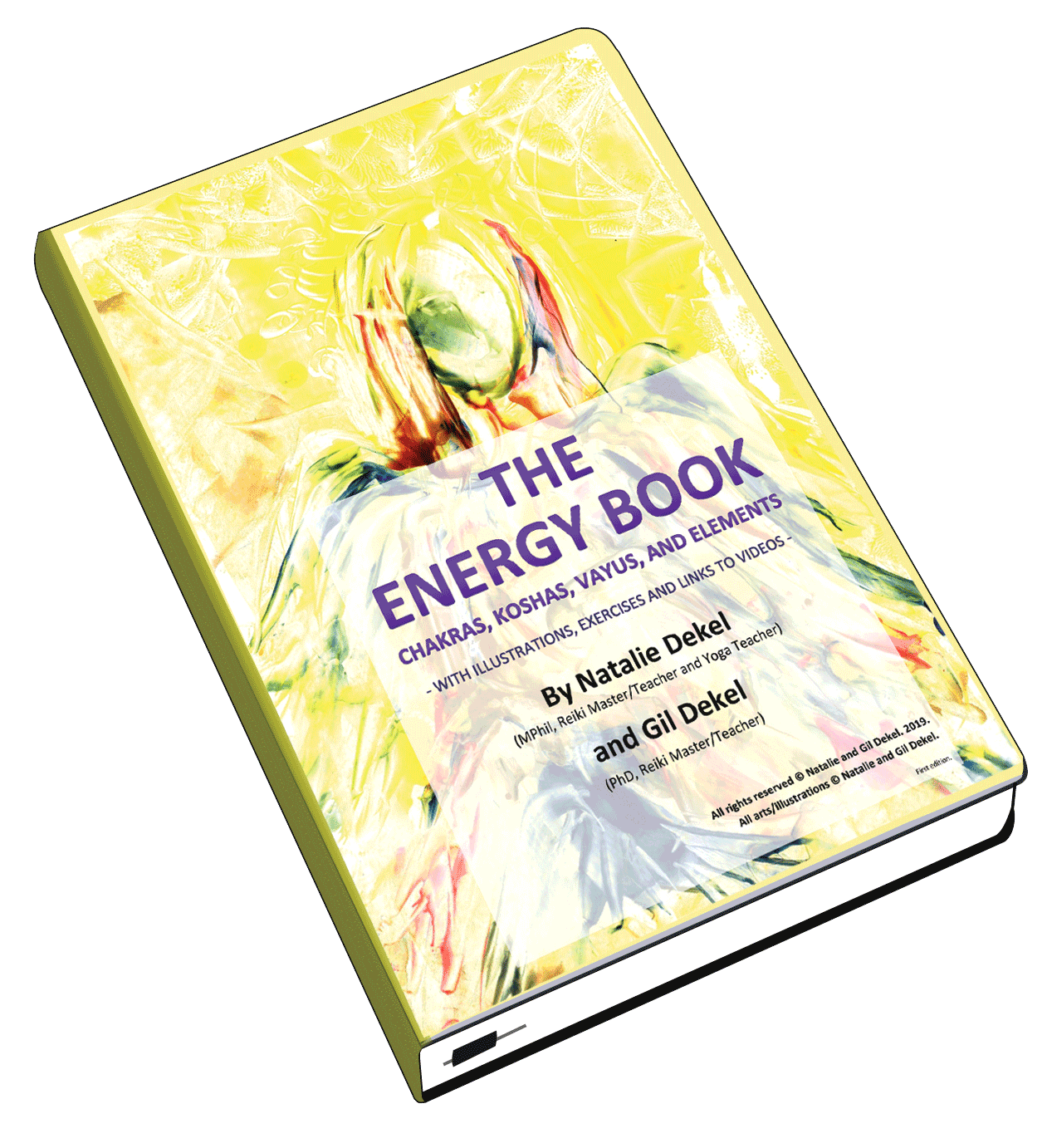
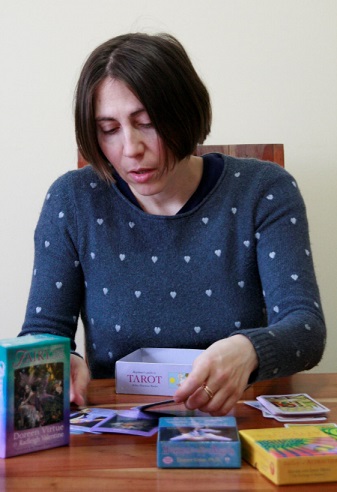 - Reading with Natalie, book here...
- Reading with Natalie, book here...